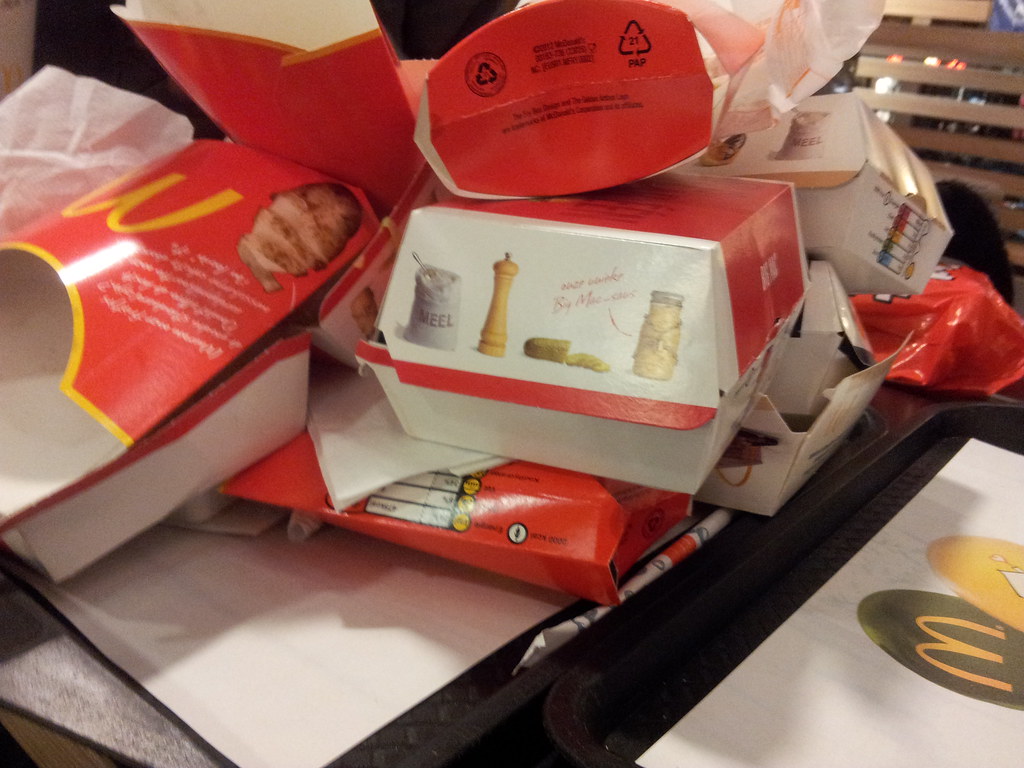http://e-info.org.tw/node/209664?utm_source=%E7%92%B0%E5%A2%83%E8%B3%87%E8%A8%8A%E9%9B%BB%E5%AD%90%E5%A0%B1&utm_campaign=9599b477bd-EMAIL_CAMPAIGN_2018_01_08&utm_medium=email&utm_term=0_f99f939cdc-9599b477bd-84956681
麥當勞改善食品包裝 提高回收率、全面換可回收材質
摘譯自2018年1月16日ENS美國,伊利諾州,橡樹溪報導;姜唯編譯;蔡麗伶審校
今日,全球麥當勞餐廳的顧客包裝回收率僅約是10%!速食業龍頭麥當勞16日宣布,他們設定了2025年所有麥當勞餐廳顧客食品包裝的回收率目標,且將在2025年達成顧客食品包裝100%來自再生、回收或認證來源,並優先選用森林管理委員會(Forest Stewardship Council,FSC)認證材料。
麥當勞在全球超過100個國家共擁有超過3萬7000個據點,是僅次於賽百味(Subway)的全球第二大速食連鎖。目前,麥當勞50%的顧客食品包裝屬再生、回收或認證來源,64%的纖維材質包裝來自認證或回收來源。
在一份聲明中,麥當勞表示理解全球各個城市和國家有不同的回收基礎設施、法規和消費者行為,但它計劃幫助解決問題及推動變革。麥當勞的既有目標是2020年達成所有纖維包裝來自回收或零森林砍伐認證的來源。新目標則更具野心。
麥當勞供應鏈和永續發展長德百斯(Francesca DeBiase)表示:「我們有責任利用我們的規模做出改變,對全球產生有意義的影響。」
「我們的顧客希望我們減少包裝廢棄物。我們的目標是達成顧客希望我們做到的事,減少使用包裝、責任採購,設計好麥當勞餐廳內和外的廢棄物處理流程,以增加回收再利用,幫助建立更乾淨的社區。」德百斯說。
麥當勞更表示計劃在2018年底之前全球性地淘汰泡棉包裝。目前其總共使用的包裝材中,若以重量計,約有2%是泡棉材料,但麥當勞表示「這一小步是變革旅程中關鍵性的一步。」
為了實現這些目標,麥當勞將與領先的行業專家,地方政府和環保協會合作,改善包裝和回收實踐,推動更智能的包裝設計,實施新的回收計劃,建立新的測量計劃,並教育餐廳和客戶。
環境組織對麥當勞決定延續其永續包裝目標表示肯定。
環境保護基金會(Environmental Defense Fund)商業計畫EDF+Business副總裁莫瑞(Tom Murray)表示:「近30年前,麥當勞和EDF開始合作減少固體廢棄物,加速包裝創新。一路走來,我們為企業和非營利組織開創了新的合作模式。今天,麥當勞繼續透過設定具有企圖心的目標,與整個價值鏈上的夥伴合作,以達到最大的影響力,提高永續發展性。」
25年前麥當勞率先開始關注永續包裝,與環境保護基金合作減少了超過3億磅的包裝,回收了100萬噸瓦楞紙箱,合作10年後減少了30%的廢棄物。
2014年,麥當勞加入世界自然基金會(WWF)的全球森林貿易網計畫,並確立其纖維採購目標,包括優先使用FSC認證木質纖維包裝。
森林管理委員會總幹事卡斯坦森(Kim Carstensen)說:「麥當勞與全球最值得信賴的森林產品認證合作,讓麥當勞在提升顧客參與上有了獨特且強而有力的機會。」
McDonald’s Pledges Sustainable Packaging By 2025
Fast food giant McDonald’s today announced that by 2025, all of the company’s guest packaging will come from renewable, recycled, or certified sources, with a preference for Forest Stewardship Council certification.
Also by 2025, the company has set a goal to recycle guest packaging in all McDonald’s restaurants.
Currently, 50 percent of McDonald’s customer packaging comes from renewable, recycled or certified sources and 64 percent of fiber-based packaging comes from certified or recycled sources. Today, an estimated 10 percent of McDonald’s restaurants globally are recycling customer packaging.
With more than 37,000 locations in over 100 countries, McDonald’s is the world’s second largest fast food restaurant chain, after Subway.
McDonald’s said in a statement that the company understands that recycling infrastructure, regulations and consumer behaviors vary city to city and country to country around the world, but it plans to be part of the solution and help influence powerful change.
The new goals expand upon McDonald’s existing goal that by 2020, all of its fiber-based packaging will come from recycled or certified sources where no deforestation occurs.
“We have a responsibility to use our scale for good to make changes that will have a meaningful impact across the globe,” said Francesca DeBiase, McDonald’s chief supply chain and sustainability officer.
“Our customers have told us that packaging waste is the top environmental issue they would like us to address,” said DeBiase. “Our ambition is to make changes our customers want and to use less packaging, sourced responsibly and designed to be taken care of after use, working at and beyond our restaurants to increase recycling and help create cleaner communities.”
McDonald’s says the company also plans to eliminate foam packaging from its global system by the end of 2018. While about two percent of its packaging, by weight, is currently foam, the company says it believes that “this small step is an important one on our journey. ”
Environmental groups praised the fast food company’s decision to extend its sustainable packaging practices.
As Tom Murray, vice president of EDF+Business at Environmental Defense Fund said, “Nearly three decades ago, McDonald’s and EDF teamed up to tackle solid waste and accelerate innovation in packaging. Along the way, we pioneered a new partnership model for companies and nonprofit organizations. Today, McDonald’s continues to raise the sustainability bar by setting ambitious goals and collaborating with partners across the value chain for maximum impact.”
McDonald’s first began its focus on sustainable packaging nearly 25 years ago with the establishment of the groundbreaking partnership with the Environmental Defense Fund. The initiative eliminated more than 300 million pounds of packaging, recycled a million tons of corrugated boxes and reduced waste by 30 percent in the decade following the partnership.
In 2014, the company joined WWF’s Global Forest & Trade Network program and set its fiber sourcing targets, including FSC preference for packaging made from wood fiber.
“The partnership between McDonald’s and FSC, the world’s most trusted certification of forests and forest products, also creates a uniquely powerful opportunity for McDonald’s to engage customers about simple ways to protect forests,” said Kim Carstensen, director general of the Forest Stewardship Council.
※ 全文及圖片詳見:ENS
作者
蔡麗伶(LiLing Barricman)
In my healing journey and learning to attain the breath awareness, I become aware of the reality that all the creatures of the world are breathing the same breath. Take action, here and now. From my physical being to the every corner of this out of balance's planet.









沒有留言:
張貼留言